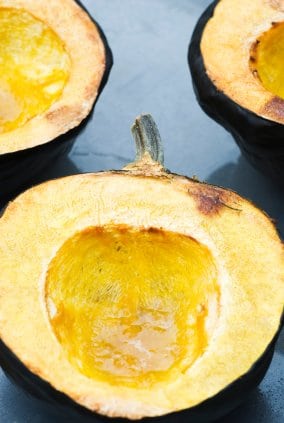Have you ever considered switching to a vegetarian – or even vegan – diet?
“Plant-based diets” are on the rise, particularly among people with a personal or family history of heart disease, diabetes, hypertension, and other health issues that have been unequivocally connected to a meat-heavy diet.
But how do you know if making the switch is right for you? And what on earth will you eat when you do?! Not only that, but will you get enough nutrients to be healthy?
Here are few things to think about when considering a switch, including some that I learned during my own 10-year exploration of vegetarianism (and subsequent journey back to being an omnivore).
- Start slow. If eating a vegetarian or vegan diet is entirely new to you, work up to it. Take one thing out of your diet at a time and find something new. Don’t think so much about finding substitutes – because no “fake meat” product will ever taste like that burger – as about exploring new options. You may be surprised to find a whole new list of favorites you’ve never even considered.
- Eat whole foods. Yes, I’d say that to pretty much anyone; but it’s of particular concern for newbie vegetarians and vegans who can quickly become “junk food vegetarians.” There’s a plethora of “fake meat” products on the market taking advantage of interest in plant-based diets for health. Tofu dogs, vegetarian chicken patties, and texturized vegetable protein taco meat are NOT food! Take a look at the ingredient list; if it’s more than five items long or includes words you can’t pronounce, step away. Unless, of course, you like the idea of getting your food from a science lab.
- Focus on variety. Eating a variety of whole foods is a good idea for anyone interested in getting the full spectrum of nutrients. Poorly planned vegan diets in particular can be low in vitamin B12 and other essential vitamins and minerals; so be sure to think through your daily food choices and eat a wide variety of fruits, vegetables, nuts, seeds, whole grains, and legumes.
- Pay attention to protein. Vegetarian and vegan diets can be protein-rich; but you have to know where to look. Don’t just cut out meat (and other animal products if you’re going vegan) and eat what’s left over. Beans, whole grains, nuts, seeds, and legumes are all good sources of plant-based protein. If you’re an “ovo-lacto” vegetarian, eggs and dairy are good protein sources as well; just stick with lower-fat options like skim milk or low-fat yogurt to avoid overdoing it on saturated fat.
- Be selective with soy. Soy is one of the most heavily processed foods around; most of those “fake” products I mentioned are made out of processed versions of soy – soy protein isolate, soy burgers, soy cheese. Soy, like anything else, is best consumed in its whole food form. Try whole and fermented soy foods like tofu, tempeh, miso, and edamame instead of Tofurky.
- Listen to your body. As with any dietary change, it’s important to use your body as the definitive source for what works and what doesn’t for you. Whatever your reason for making the switch, experiment to find the mix of foods that makes you feel your best.
If you’re struggling to find vegetarian and vegan recipes that you like, check out any of the Moosewood Restaurant cookbooks (my favorite is Moosewood Restaurant Cooks at Home.
Here’s one of my own fall vegetarian recipes to get you started. Share your tips for going vegetarian or vegan in the comments below the recipe!
—————————————
Recipe: Baked Acorn Squash
This recipe is one of my personal favorites and is super easy. Paired with a whole grain (like quinoa or brown rice) and some green veggies, it makes a satisfying vegan meal. You can also make a yummy stuffed squash by scooping out the cooked squash, mixing it in a large bowl with the other ingredients below, and putting it back inside the skins.
Prep Time: 10 minutes
Cooking Time: 45 – 60 minutes
Serves 4.
Ingredients:
- 2 medium acorn squashes
- 2 tablespoons maple syrup
- Walnuts
- Dried cranberries (preferably without added sugar)
- Extra virgin olive oil
Instructions:
Preheat oven to 350 degrees. Cut squashes in half. Remove seeds and stringy flesh with a spoon. Brush squash halves with olive oil. Place them flesh side down in a glass baking dish. Bake for 45 – 60 minutes, until a fork goes through the squash easily.
Remove squash from oven. Flip squash halves over so they look like little bowls. Add ½ tablespoon of maple syrup to each half along with a sprinkle of walnuts. Lightly mix it together. Add a few dried cranberries on top and voila! Dinner!
xo,






